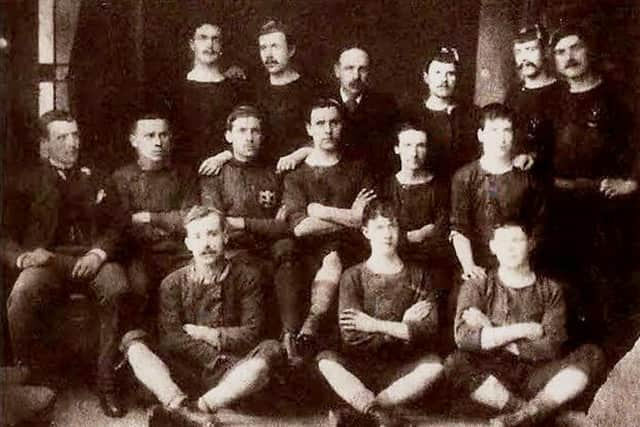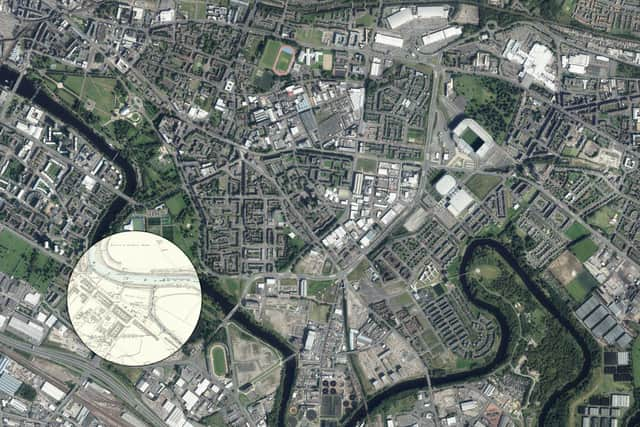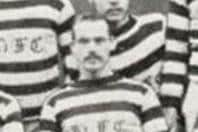Glasgow Hibernian: The short-lived team with ties to Celtic created after Hibs refused to leave Edinburgh


Since 1875 Hibernians had endured a tumultuous existence, battling sectarian resistance and struggling to fill the team with quality individuals.
By the mid-1880s, things were finally looking up in terms of results and support.
Advertisement
Hide AdAdvertisement
Hide AdFounder and first captain Michael Whelahan wanted Hibs to become the best in the country – to “increase charitable work… and to give a real sense of pride to all of Ireland’s exiled children in Scotland”, rather than for competitive success.


In a bid to raise the club’s profile, Hibs began testing themselves against the big guns in the West. Renton and Rangers were both beaten, along with Queen’s Park, and the Capital club’s ability to match the best sides in the country was not going unnoticed.
Around this time, a Hibs XI travelled to Glasgow’s East End to play a charity game against a club named Glasgow Hibernian that the Edinburgh side had helped form. The match had been organised and hosted by the St Vincent de Paul Society – led by one Brother Walfrid, who felt a club in Glasgow formed along the same lines as Hibernians could potentially attract an even larger following.
Establishing Celtic and link with Hibs
When Walfrid founded Celtic FC, he rejected Glasgow Hibernian as a potential name for the club to avoid confusion with the Capital side. It is unknown what became of the previous Hibs-formed team of the same name, but it is assumed the original side had ceased to exist.


Advertisement
Hide AdAdvertisement
Hide AdOne of Walfrid’s Celtic co-founders was Glasgow-born Irish businessman James Quillan; a key member of the Irish National League political party.
He had been among those invited to hand out the medals when Hibs won the Scottish Cup in 1887. The following year he donated money to Celtic and was elected vice-president but just 12 months later, the relationship had gone sour.
First Celtic AGM as cracks begin to show
The first Celtic AGM was held in June 1889. The mood was buoyant; the club having beaten Cowlairs to win the North-Eastern Cup, reached the Scottish Cup final, and scored more than 200 goals in its debut season.
But just two months later there were rumours of unrest, talk of formation of a new club, and an ugly spat between Celtic committee members played out on the letter pages of local newspapers.
Advertisement
Hide AdAdvertisement
Hide AdQuillan wanted to set up a team broadly similar to Celtic but limiting membership to those from an Irish Catholic background, using Hibs as his inspiration. Through in Edinburgh, Hibs chiefs vowed to push on, despite the ongoing threat from the rise of Celtic.
Hibs reject offer to move west
Meanwhile, divisions at Celtic were being made public. There was growing discontent from some members with how the club was being run: less like the charity-focused Hibs, and more as a money-generating exercise.
The establishment of a Celtic reserve team put further pressure on Hibs and around this time an urgent meeting was held in St Mary’s Hall just off the Royal Mile at which Whelahan flatly dismissed rumours of relocating to Glasgow.
Quillan and the other pro-Hibernians members of the Celtic Committee had hoped to entice Hibs to move to the west to challenge Celtic. When that approach failed, Quillan and his cohorts established their own team under the Glasgow Hibernian banner.
Glasgow Hibernian rumours gather pace
Advertisement
Hide AdAdvertisement
Hide AdJust weeks after the fractious Celtic AGM, talk of the new team made the papers.
The Glasgow Evening Post of August 8 1889 reported: “It will be said that the club is a secession from the Celtic, yet that is not wholly true for it has behind it a large amount of help and sympathy in no way identified with the present East-End organisation.”
The article revealed details of a meeting held in Bridgeton at which a club committee was elected. Players, and a “first-class field” in Oatlands called Hibernian Park had also been secured.
The rise and fall of Glasgow Hibernian
The team would play in green and maroon stripes. The squad comprised loan signings and players joining from lower-level Irish teams including Hamilton Hibernian and Carfin Shamrock.
Advertisement
Hide AdAdvertisement
Hide AdHibs had rejected an invitation to be the club’s first opponents but curiously, a handful of Easter Road players turned out for Glasgow Hibernian in a match against Abercorn in September 1889.
Goalkeeper Charlie Kelly; half-back Owen Coyle, and forward Paddy Smith all played for the Glasgow side in a 4-2 defeat, with Smith scoring one of the two goals.
Glasgow Hibernian’s prospects quickly dried up. By February 1890 the club was in financial dire straits; crowds rarely topped three figures and many of the players had moved on.
Trainer Paddy Cannon – who would later go on to spend more than 40 years at Hibs as groundsman and trainer – donated a trophy he had won during his athletics career as the prize for a proposed tournament involving clubs from England and Scotland in the hopes that this would “restore the Hibs committee to affluence" but there is little information suggesting the competition took place.
Advertisement
Hide AdAdvertisement
Hide AdOn October 20 1890, Glasgow Hibernian Football Club was dissolved.
Hibs continue to struggle
Hibs’ struggles were not over, either. Support dwindled as form nosedived and fewer games were played in Edinburgh. When Club Secretary Richard Payne missed a key meeting in Glasgow to discuss the future of the Scottish game, Hibs were unsurprisingly omitted from the newly-formed Scottish League and shortly after, had to vacate Hibernian Park.
With the team homeless, struggling to arrange friendly matches, and experiencing a downturn in support, the future looked bleak. Payne failed to negotiate leases on Powderhall and Logie Green, although the club temporarily rebranded as Leith Hibernians and defeated Edinburgh Northern 2-1 at the latter ground.
In February 1891, Leith Hibernians played their one and only game at Leith Athletic’s Hawkhill Stadium, not far from the site of the present-day Easter Road.
Advertisement
Hide AdAdvertisement
Hide AdFour months later, following the death from pneumonia of founder Canon Hannan and with the club in mourning, a decision was taken to pause operations to regroup and hopefully come back stronger.
A message from the Editor:
Thank you for reading this article. We're more reliant on your support than ever as the shift in consumer habits brought about by Coronavirus impacts our advertisers.
If you haven't already, please consider supporting our sports coverage with a digital sports subscription.
Comment Guidelines
National World encourages reader discussion on our stories. User feedback, insights and back-and-forth exchanges add a rich layer of context to reporting. Please review our Community Guidelines before commenting.